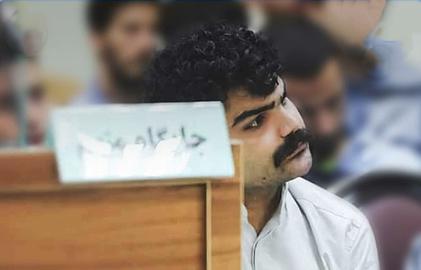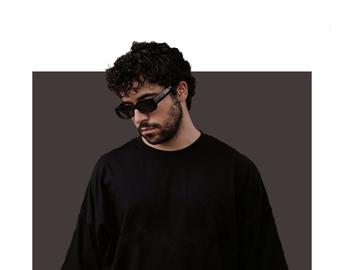A Country Without a Flag, the new film by Iranian Kurdish filmmaker Bahman Ghobadi, premiered at the 20th Busan International Film Festival in South Korea from October 1-10.
Ghobadi has received international acclaim, beginning with his first feature film, A Time for Drunken Horses, which won the Caméra d'Or at the Cannes Film Festival in 2000. He has also won awards at international film festivals in Chicago, Berlin and San Sebastian. In 2006, Index on Censorship presented Ghobadi with an award for his contribution to freedom of expression.
A Country Without a Flag follows the lives of two well-known figures in today’s Kurdistan. The first is Helen Abdulla, known as Helly Luv, the singer who became famous for her music video against Islamic State (ISIL). The second is Nariman Anwar, a pilot whose legs were injured and permanently damaged in a plane crash and who currently builds planes for Kurdistan. Under the shadow of war, these two famous Kurds visit camps in Kobane and elsewhere in Syria, teaching the refugees living there about singing and flying.
IranWire talked to Bahman Ghobadi about his new film.
Last year your must-see short film was featured at Venice Film Festival. Now you’ve finished a new documentary. So you have a strong interest in short films and documentaries, even though you’ve also turned your attention to feature-length films.
To tell the truth, even when I make a feature film I believe it has its roots in documentaries and shorts. I approach a feature-length film as though I am making 10 films. It dawned on me late, but now my philosophy is to enjoy every moment of filmmaking. I no longer want to suffer while making movies. Making documentaries and short films gives me the ultimate joy, and I try to enjoy myself the same way when making feature films.
Where did the idea for A Country Without a Flag come from? What did you feel was important about it?
Last year, after I returned to Erbil this unwanted war started, and this terrorist group [ISIL] invaded Kurdistan. Many Kurds poured into the Erbil area and when I started photographing them, I decided to set up photography classes for them. The government of Erbil had asked me to do a project about Erbil. For the project I had a team of five and, over three seasons — for 10 days at a time — I followed two people. I wanted to make two documentaries. But then I noticed how similar these two people were, and the idea of bringing them together in one documentary occurred to me during the last season of filming. This is the beauty of making documentaries. I believe the documentary is the true child of cinema.
The two main protagonists of the film are Helly Luv and Nariman. Why them?
In the beginning, I found two interesting characters, both men. Then I noticed the important role women were playing in Kurdistan. I decided I must bring their pain and suffering into the film. I tried to give the film a different take, and present people who were nothing like the Kurds you see on the news.
But these two attracted my attention more. The interesting point is that the families of both of them were members of the Peshmerga [Kurdish military], both their fathers and their grandfathers. But they had returned — not to fight, but to build up a Kurdistan free of war. They wanted to rebuild a land that had suffered from war for many years.
The film could have descended into slogans but you avoided this. Were you aware of this, and did you take care to prevent it from becoming just about slogans?
I noticed that, like them, I had returned there to contribute to my society by making films. Sometimes I cried when I watched old rushes. I realized that I had to look at it from a distance. I tried to stop editing when I became emotional and continue later. Although this film praises a nation and a country I think we moved in the right direction.
The film is a careful combination of a documentary and a collection of stories. Why do you think that is?
Imagine: A girl called “Helly Luv” returns from America to Kurdistan and instead of taking up arms, she wants to take up a musical instrument and do something new. This is a story in itself. The story of Nariman is so powerful that I wanted to have it turned into a novel so that later it could be made into a movie. Think about it. Somebody whose legs have been damaged in a plane crash has risen up again, wants to build planes and sets up a class for it. This is a fable all by itself. It embodies the story of the people of this land.
The editing is a powerful part of the film. How did you arrive at the style? Did you have an idea of it while filming or did it take shape during editing?
I think you must have an idea of how you’re going to edit a film. You see the story of three generations, so I can take you back 40 or 50 years, from civil wars to Saddam Hussein’s massacres — and now this unwanted war. These two were key figures who could get me to a point where I could talk about these three generations. They brought along a kind of parallel editing with them.
The film is about war and, at the same time, it is explicitly anti-war. We see this both in the statements by the pilot and the world of Helly Luv as a singer. But in the last shot they both have to go to the battlefield. How do you account for that?
Kurdistan has been at war for years, but the people are anti-war. This is in the film, from the culture and the people themselves. The film emphasizes this point. They have never bought arms and the arms they have are those with which their parents were killed. Now they keep these arms to be able to defend themselves. Unfortunately everybody there is forced into fighting. The film says that this must stop somewhere.
The movie seems personal and heart-felt. How personal is it?
The film is personal and comes from the heart. But as I am talking to you I feel that it is not my film. It belongs to these kids, to two, three or forty million people. It comes from the heart of all Kurds who are indirectly talking about their pain, their joy and their suffering. I sympathize with them because I am a Kurd, I empathize with them and have grown up with them. I played the same games that Nariman played as a child. Or, like Helly Luv, I loved music and wished to have a piano, so that I could learn piano in Sanandaj [in Iran] and teach it. I don’t know why, but I feel this is not my film alone — it is the voice of a people.
Related aarticles:
50 Iranian Women you Should Know: Tahmineh Milani
Iranian Filmmaker Sentenced to Six Years in Prison and 223 Lashes
To read more stories like this, sign up to our weekly email.
visit the accountability section
In this section of Iran Wire, you can contact the officials and launch your campaign for various problems




























comments